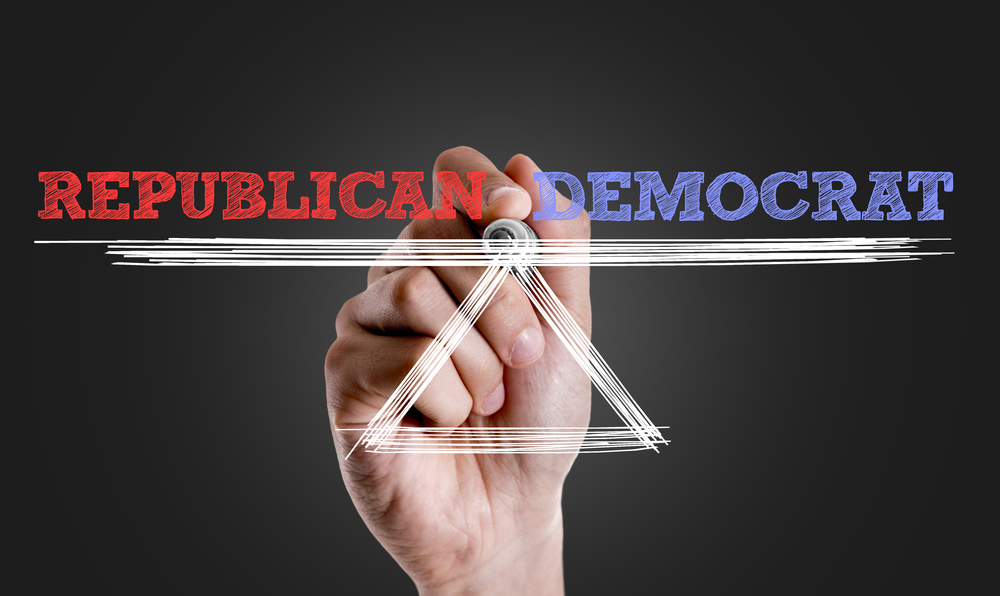The U.S. Presidential Campaign’s Rising Political Risk

Please note that we are not authorised to provide any investment advice. The content on this page is for information purposes only.
Whether Hillary Clinton, Donald Trump or somebody else takes the White House, pragmatism is likely to be the eventual winner. Dan Steinbock looks ahead to how an American presidency led by either of the two leading contenders will deal with China and Asia, including on matters of trade and geopolitics.
In the US presidential election, the leading contenders – Democrat Hillary Clinton and Republican Donald Trump – are now seeking to consolidate their lead from Super Tuesday’s multiple state contests.
Whether Hillary Clinton, Donald Trump or somebody else takes the White House, pragmatism is likely to be the eventual winner. Dan Steinbock looks ahead to how an American presidency led by either of the two leading contenders will deal with China and Asia, including on matters of trade and geopolitics.
In the US presidential election, the leading contenders – Democrat Hillary Clinton and Republican Donald Trump – are now seeking to consolidate their lead from Super Tuesday’s multiple state contests.
According to polls, two out of every three Americans will vote based on domestic issues (the economy, immigration, jobs and health care). However, for whom will they vote?
Today, real estate billionaire Trump has about 40 percent of Republican national support and more delegates than all his rivals, including Ted Cruz and Marco Rubio, who each attract 10-20 percent of Republicans. Among the Democrats, Clinton garners almost half of the national vote and has twice as many delegates as Senator Bernie Sanders.
In US presidential rivalries, money makes winners. By the end of February, Clinton’s campaign had raised US$190 million. To the surprise of Clinton’s Wall Street donors, Sanders had garnered US$100 million, even though his funding stems almost exclusively from ordinary Americans.
By the end of February, Cruz and Rubio had raised some US$100 million and US$80 million respectively. Trump had raised just US$27 million. However, he knows how to sell media bites without having to buy media time. In addition, when the real game begins, he has millions to burn.
However, how would the next president deal with China and Asia?
Clinton’s liberal interventionism
In Beijing, Clinton’s politics sparks constipation, including Washington’s view of human rights and internet freedoms (which exclude cyber-monitoring). However, when US economic prospects have dimmed, she has ignored her principles (her first trip to Asia as secretary of state in 2009). China and most of Asia tend to see her as a shrewd Machiavellian.
Clinton is also seen by China as something of an anathema, due to her role in the US “pivot” strategy and efforts to restrict (de facto “contain”) China’s rise. That policy stance accounts for the ongoing transfer of 60 percent of the US Navy fleet into Asia by 2020 and the accompanying military build-up in the region.
To benefit from Asia’s growth potential, President Barack Obama negotiated the Trans-Pacific Partnership (TPP) agreement, which excludes China. To deter Sanders, Clinton has condemned the TPP but she is likely to adjust her views in the end.
The US pivot is supported by those East and Southeast Asian nations – especially Japan, Vietnam and the Philippines – that have territorial and maritime disputes with China. However, while many would like to hedge their bets between the US and China, most are focused on economic development and inclusive trade.
The same goes for the TPP. In China and much of the Association of Southeast Asian Nations, it is seen as a step to a broader free trade agreement that would include China. Asia prefers engagement, not containment.
Under the George W. Bush administration, America’s imperial dreams alienated much of the world. Obama has tried to keep the neoconservatives in check. In contrast, Clinton likes to keep them close, including Dick Cheney’s foreign policy adviser Victoria Nuland and her husband Robert Kagan, a leading neoconservative and advocate of an American Empire.
Occasionally, even Clinton has flirted with the kind of “dangerous containment” that Kagan outlined in the late 1990s. Designed against China, a part of this strategy is a renewed effort to confront – not engage – China.
Trump’s two sides
In foreign policy, Trump is seen as Bush’s ultra-zero-lite counterpart who needs (and can afford) a regime of handlers. The bad news is that he has already angered most US minorities, two former Mexican presidents, the British Parliament, the world’s Muslims, Israelis and the Palestinians, and even the Pope.
However, if Trump should walk the talk, what would it mean to China and Asia?
In foreign trade, Trump has pledged to tear up or renegotiate the TPP, which would be an ultimate embarrassment to Japan and those ASEAN nations that have joined the deal. To reduce the US trade deficit with the region, Trump would raise trade rhetoric against China, Japan and ASEAN’s emerging low-cost producers. That could unleash a currency war with a Treasury department, including a 45% tariff on Chinese exports, and raising import duties on Japanese cars.
In currency policy, Trump would confront Prime Minister Shinzo Abe and the Bank of Japan, which are driving the yen down against the dollar, while challenging China’s foreign exchange reforms that currently translate into depreciation. In each case, the net effect would be aggravated currency friction.
America’s 2016 Election Risk, China and Asia is republished with permission from The Difference Group




